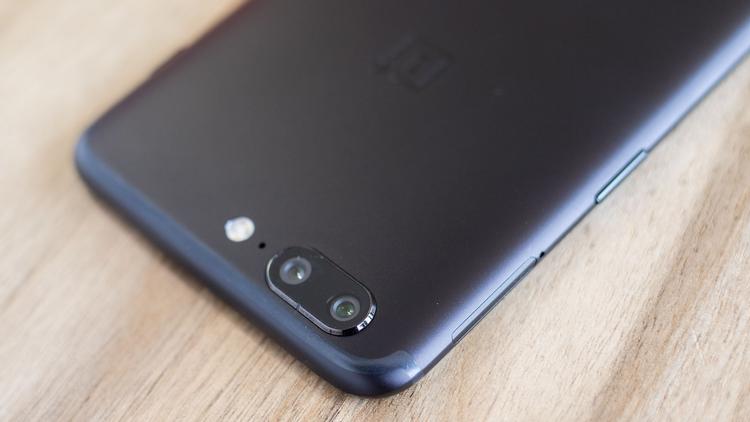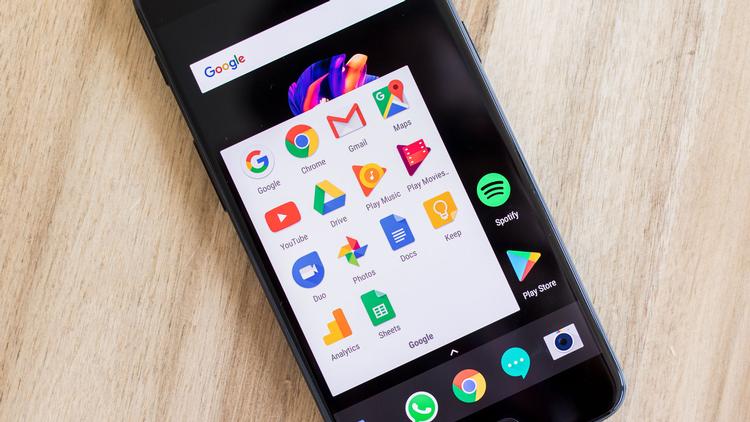One of those is, of course, the iPhone 7. And here we compare the two in detail so you can see how they differ and decide which is the best buy for you.
OnePlus 5 vs iPhone 7: Which is cheapest?
£50 has been added onto the bill compared to the 3T, so for the 64GB storage / 6GB RAM model, you’ll pay £449 to buy the OnePlus 5 SIM-free. Find out more about where to buy the OnePlus 5 and the new trade-in scheme. There’s a 128GB / 8GB version, too, which costs £499. 8GB is more than many laptops, so this is likely overkill for most people, but the £50 premium is worth it for the extra storage if you need it. Apple’s iPhone 7 starts at £599, considerably more. It’s available direct from Apple, plus plenty of other retailers. And that has a meagre (and not-expandable) 32GB of storage. You’ll need to part with an extra £100 to get 128GB, and that amount again for 256GB. So although the OnePlus 5 is the most expensive yet, it still looks like great value when compared to the iPhone.
Features and design
There’s no denying that the latest OnePlus looks rather a lot like the iPhone 7 Plus, especially in black, and the similarities extend beyond aesthetics.
On the rear are two cameras and, yes, they work exactly like the iPhone’s. One has a normal field of view, the other a 2x zoom. It also has a 5.5in full HD screen, but this is housed in a smaller, lighter frame.
But this isn’t a comparison to the 7 Plus, so let’s see how it stacks up against the 7. It’s fairly obvious that the OnePlus 5 offers – in general – better specs for less money. It loses out by lacking an IP67 or IP68 certification for water-resistance, however. But you can’t choose a phone by specifications alone, especially where cameras are concerned. (We’ll get to these in a bit.) Fortunately, both phones are top notch in terms of performance. They’re speedy whether navigating around their respective operating systems, playing Asphalt 8 or browsing the web. Don’t forget that the OnePlus 5 has essentially the same internals as much more expensive Android phones such as the Galaxy S8, HTC U11 and Sony Xperia XZ Premium. Build quality, too, is excellent in both camps. They both have good-quality screens, although the iPhone’s lower resolution is noticeable. There’s a difference in technology, too, with the iPhone sticking with LCD, the OnePlus using AMOLED. Ultimately, while the iPhone has a very good screen, it’s beaten by the OnePlus 5’s.
Cameras
They might lack pixels, but the iPhone 7’s cameras are capable of excellent photos and videos. It’s the first iPhone to support ‘wide colour’. This means the screen can display more hues than its predecessors, and the camera can capture them. It’s also the first non-Plus iPhone to get OIS which helps keep photos sharp in low light. Video benefits too, with smooth stabilisation whether you go for 1080p or 4K recording. It’s just annoying you can’t easily switch between resolutions in Apple’s camera app.
Each video’s soundtrack is detailed and great quality, and the iPhone has no problems quickly refocusing or adjusting to changing lighting conditions. The OnePlus 5, too, is capable of excellent photos no matter how bright or dark it gets. Auto HDR helps with this, just as on the iPhone.
The 1.6x optical zoom lens (which gets bumped up to 2x using digital zoom) means more detail in photos when you can’t physically move closer to your subject and the pair of lenses allow it to blur the background which gives portrait photos a more professional look:
Those are benefits you get only with the 7 Plus: not the 7. The chink in the OnePlus 5’s armour is video. Although it has OIS, video isn’t nearly as stable as the iPhone’s. Audio quality falls short of the iPhone’s standard too.
Software
If you like to customise your phone, you’ll love the OnePlus. As well as the alert slider which toggles between three profiles (such as ‘ring’, ‘silent’ and ‘mute’) you can choose what a long-press and double-tap on each of the three navigation buttons does, such as launching the camera app.
You can double-tap the screen to wake the phone, or draw one of several letters on the screen even in sleep mode to launch whichever app you like. Later this year, iOS 11 will be available as a free update for the iPhone 7, but it’s nowhere near as configurable as Android. Sure, you’ll be able to customise the Control Centre, but it’s much more limiting in most other respects. It does have one feature the OnePlus lacks: 3D Touch. You can press the screen harder than usual to bring up things like context menus and previews of web pages and more:
Battery life
The iPhone 7’s battery life is a sore point. Even with the more efficient A10 processor, the small capacity does count against the phone. It’s rare to get through a day without needing a top up before bedtime. By contrast, the OnePlus 5 has usually 10 percent to spare, meaning you don’t have to carry a power bank or a mains charger. However, it is a little annoying that you can only fast charge with OnePlus’ own Dash Charge. The phone charges agonisingly slowly with any other USB-C charger. Jim has been testing and reviewing products for over 20 years. His main beats include VPN services and antivirus. He also covers smart home tech, mesh Wi-Fi and electric bikes.






